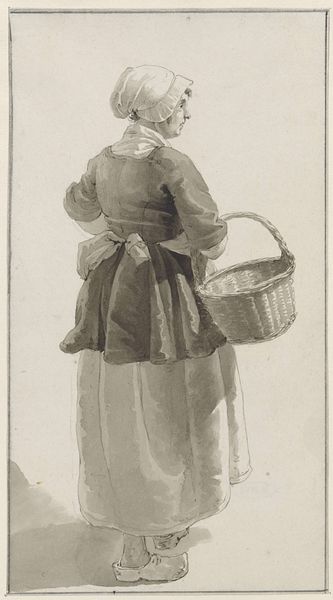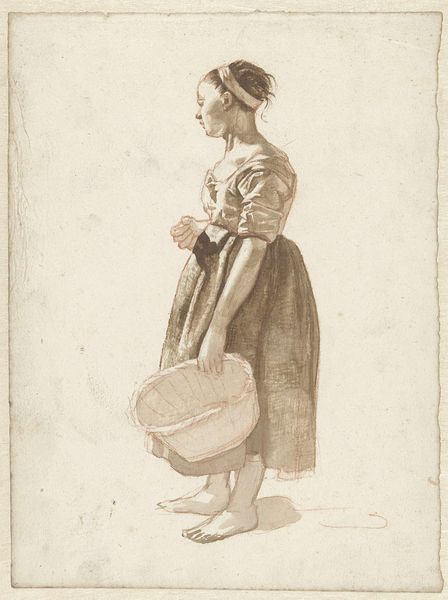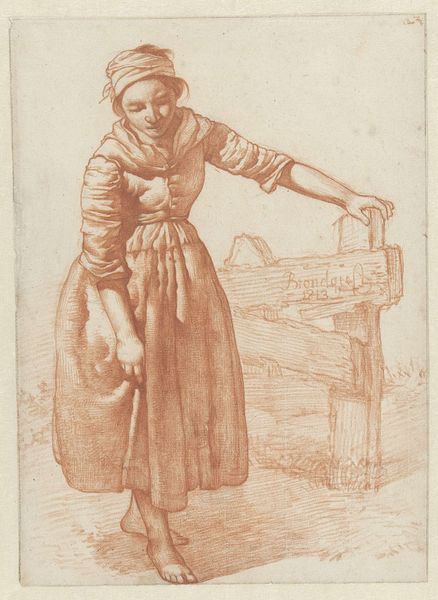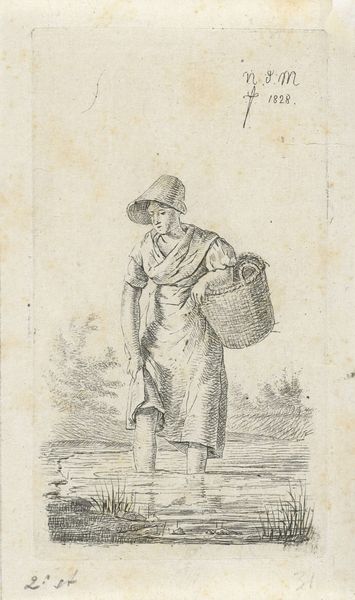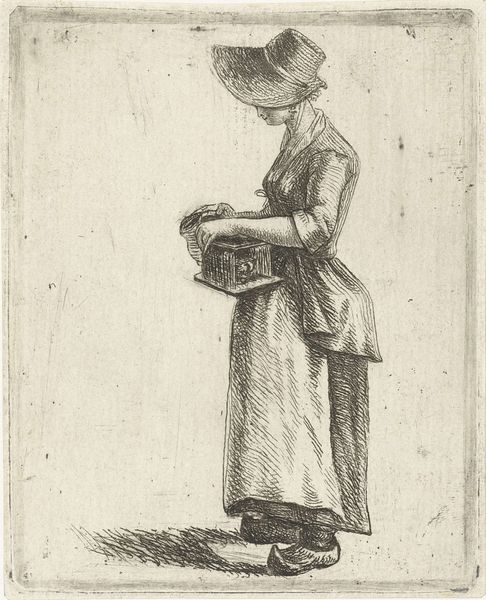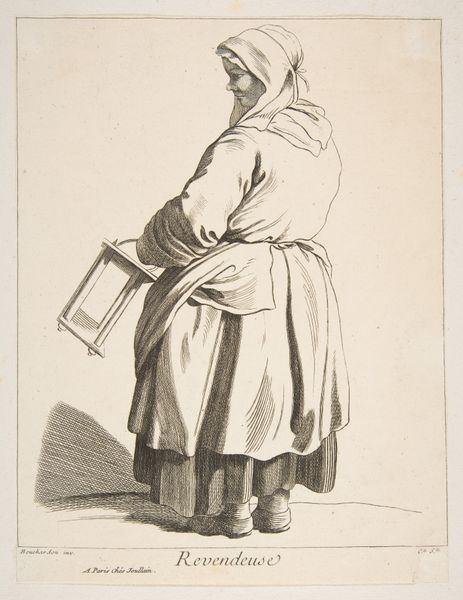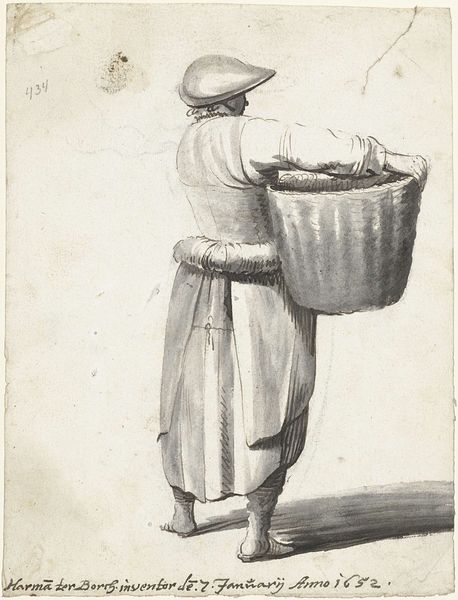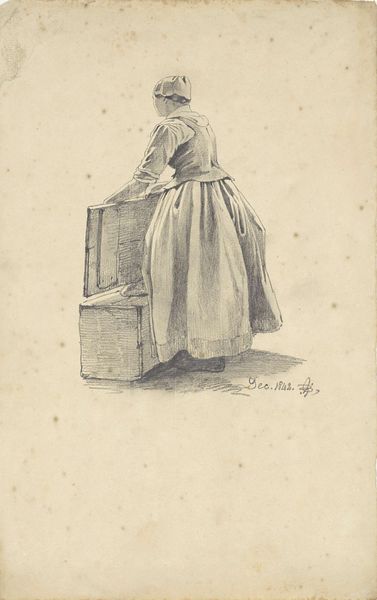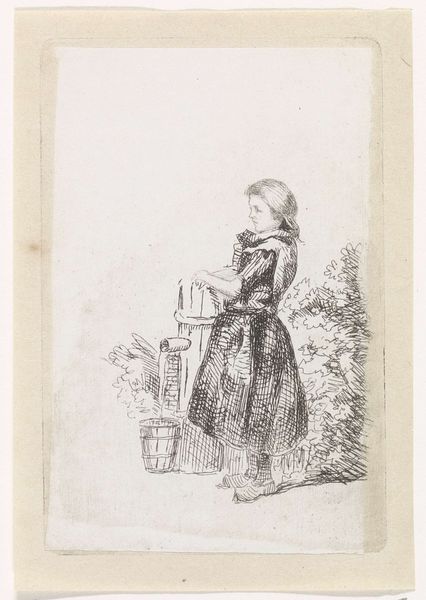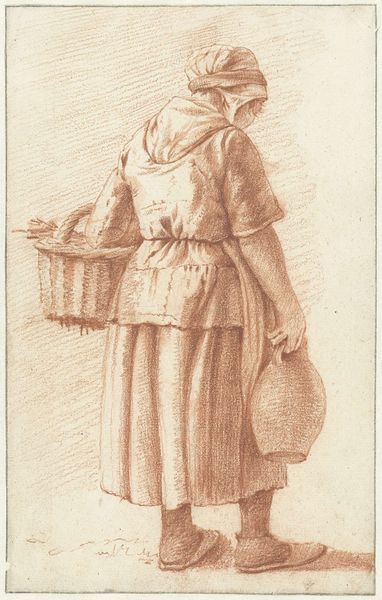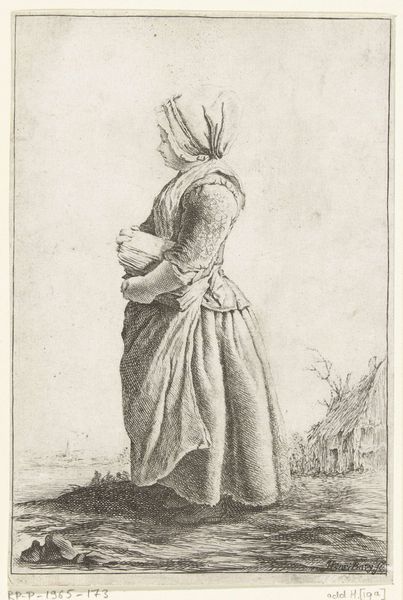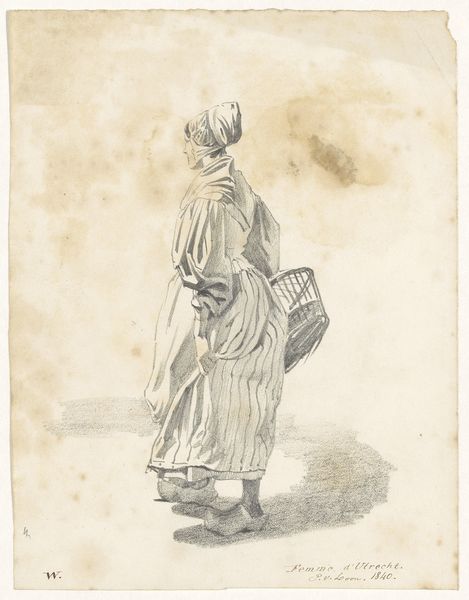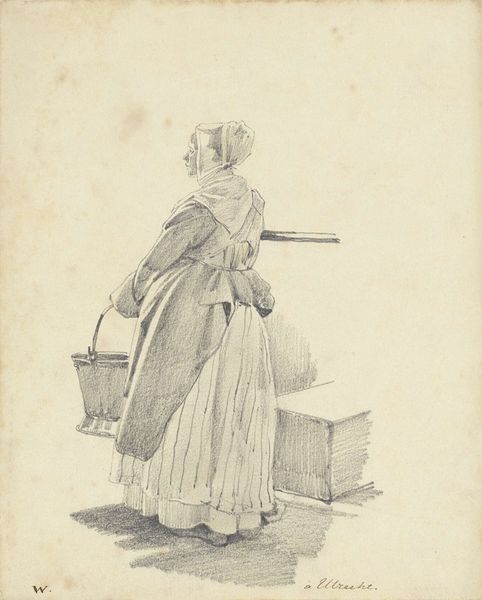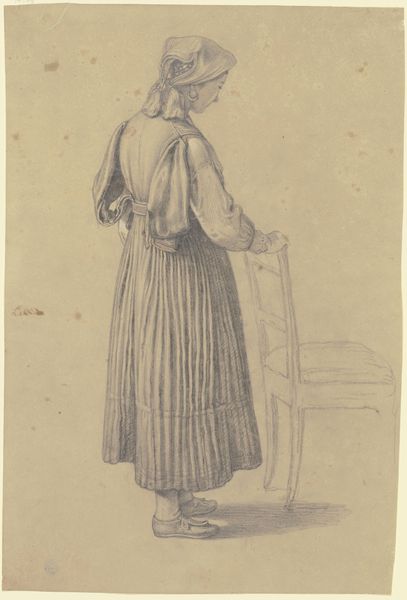
drawing, pencil
#
portrait
#
pencil drawn
#
drawing
#
toned paper
#
pencil sketch
#
charcoal drawing
#
pencil drawing
#
romanticism
#
pencil
#
portrait drawing
#
pencil work
#
genre-painting
Dimensions: height 245 mm, width 161 mm
Copyright: Rijks Museum: Open Domain
Curator: This is "Standing Girl with Bucket, Seen from the Back," a pencil drawing by Hendrik Stokvisch, dating from between 1778 and 1820. Editor: It strikes me as incredibly simple and intimate. There’s a quiet, almost melancholic air about it, despite being such a straightforward depiction. Curator: Absolutely. Stokvisch’s choice of pencil on toned paper underscores this feeling. The drawing itself becomes an artifact of humble origins; think about where the paper came from, how the pencil was made… Editor: My focus is drawn to the figure. The girl, anonymous from this rear view, carries a bucket. The bucket and her bare feet signify toil and a connection to the earth. Is this a representation of peasant life or something deeper? A suggestion about human burdens, perhaps? Curator: Potentially both. Consider the social context. During this period, representations of labor and everyday life became increasingly popular, reflecting broader social shifts and Romanticism's interest in common life. But notice the detail—how meticulously he's rendered the folds of her dress, the curve of her back. The craftsmanship is superb. Editor: The bucket she carries—it echoes those classic allegorical images of woman as the "water carrier," maybe, but robbed of their symbolism; her pose is so simple that she simply evokes a simple life of simple necessity. Curator: And let’s not overlook the inherent materiality of the artwork itself—paper and graphite, cheap materials which serve as his way to connect with and capture the reality of everyday people. It shows how art doesn't necessarily require extravagant components to portray simple dignity. Editor: I see what you mean. I’ve become fascinated by how she almost disappears into that plain backdrop of toned paper and light pencil, blending her humanity and what must be humble materials and an ordinary life with everything around it. It’s really affecting when I consider that from those humble beginnings the artwork still impacts viewers now. Curator: I concur completely! Stokvisch masterfully employed everyday tools to weave narratives of both the common and quietly sublime elements found inside everyday experiences, all wrapped inside basic items available to a hand.
Comments
No comments
Be the first to comment and join the conversation on the ultimate creative platform.
